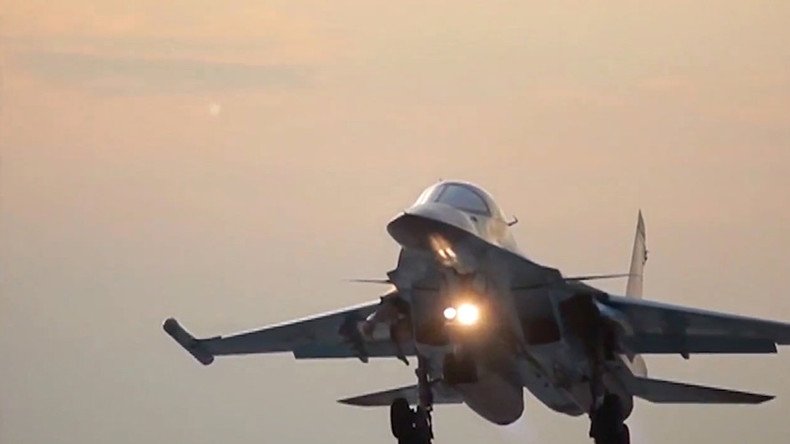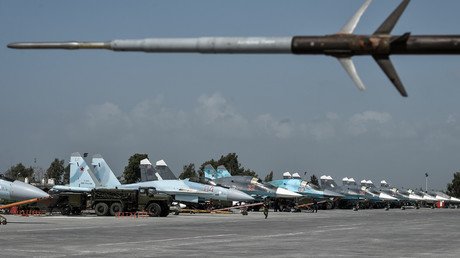Russian and US jets flew dangerously close in Syria - US official

American and Russian military jets have been involved in a ‘near miss’ in Syria, officials announced. Such incidents are a near-weekly occurrence, according to the US military.
The closest call came on October 17, in the "middle of the night, probably somewhere around midnight," Lieutenant General Jeffrey Harrigian, commander of US Air Force Central Command, said on Friday, first reported by AFP.
#BREAKING Russian, US jets had near miss over Syria: US officials
— AFP news agency (@AFP) October 28, 2016
A US aircraft “was generally in that same area” as a Russian fighter jet, and they had a “near miss,” Harrigian said, explaining that the Russian pilot probably didn’t see the US plane in the dark. The aircraft were “inside of half a mile” from each other.
“I would attribute it to not having the necessary situational awareness given all those platforms operating together," he said. Both planes were flying without lights.
Another senior military official said that the American pilot could feel turbulence from the other plane.
"It was close enough [so that] you could feel the jet wash of the plane passing by," the official said, according to AFP.
The American pilot was unable to contact the Russian via an emergency radio channel. The next day, US officers called their Russian counterparts via a hotline to ask about the incident, the official said. The hotline was set up so the two militaries can discuss the approximate locations and missions of planes in an attempt to avoid operating in the same airspace at the same time.
The communications about military operations have continued, despite the US suspending diplomatic talks with Russia about Syria at the beginning of October.
However, the hotline hasn’t prevented an increase in close calls over the past six weeks, Harrigian said. Intentional near misses, where Russian jets deliberately follow coalition planes too closely, are “happening every 10 days-ish.” Most of the incidents took place in northwest Syria.
Cases like that are generally “not a big deal,” but “it’s important to recognize this one got our attention,” Harrigian said, referring to the October 17 incident.
"I don't see them having an intent to target us," he added, but noted that he is increasingly concerned about a miscalculation by a pilot or a “safety conflict mid-air.”
Other than calling on the Russians to “make sure they know we are concerned” and to “try to get an understanding of why” their jets intercept American planes ‒ a question to which the US “typically” doesn’t get “a very satisfying answer" ‒ the United States is “not trying to pursue anything against the Russians,” Harrigian said.
"We want to keep the temperatures down with the Russians," said Colonel John L. Dorrian, spokesman for the Combined Joint Task Force – Operation Inherent Resolve, US Central Command, noting that the situation in Syria is complicated.
He did not, however, call the incident with the planes dangerous.
"We don't like planes flying half a mile from each other, but no one declared an 'in flight' situation," he said during a briefing Friday morning.
Back in October 2015, Russia and the US agreed upon a flight safety memorandum which regulates the flight paths and contacts of the countries’ air forces in Syria during an emergency situation.
“Russian servicemen make sure that no incident involving the armed forces of any other country occurs," Deputy Defense Minister Anatoly Antonov said in April, speaking about flight safety over Syria.
In 2015, the Russian Defense Ministry warned that the presence of various aircraft was on the rise in Syrian airspace and stressed that some nations were not doing enough for mutual flight safety.
From time to time there are over 30 aircraft in one area, which “of course, creates risks to the aviation in the Syrian airspace,” Russian Defense Ministry spokesman Major General Igor Konashenkov said at that time.













